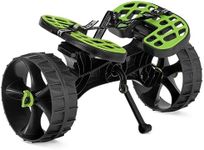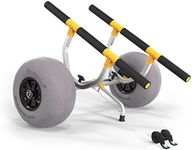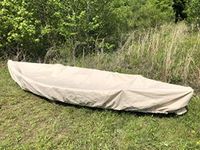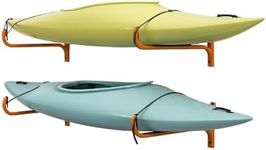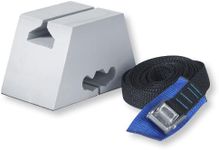Buying Guide for the Best Canoes
Choosing the right canoe involves understanding your needs and matching them with the specifications of the canoe. Canoes come in various shapes, sizes, and materials, each suited for different types of water activities. Whether you're planning a leisurely paddle on a calm lake, a multi-day expedition, or navigating through whitewater rapids, knowing what to look for will help you make the best choice. Here are the key specifications to consider when selecting a canoe.MaterialThe material of the canoe affects its weight, durability, and cost. Common materials include aluminum, fiberglass, plastic, and composite materials. Aluminum canoes are durable and low-maintenance but can be heavy. Fiberglass canoes are lighter and offer good performance but can be more expensive and less durable. Plastic canoes are affordable and durable but can be heavy. Composite materials, like Kevlar, offer the best performance and are very lightweight but come at a higher cost. Choose a material based on how you plan to use the canoe and how important weight and durability are to you.
LengthThe length of a canoe affects its speed, stability, and maneuverability. Canoes typically range from 10 to 20 feet in length. Shorter canoes (10-14 feet) are more maneuverable and easier to transport, making them ideal for solo paddling and narrow waterways. Medium-length canoes (15-17 feet) offer a balance of speed and stability, suitable for general recreational use and short trips. Longer canoes (18-20 feet) are faster and track better in the water, making them ideal for long-distance paddling and carrying more gear. Consider the type of water you'll be paddling and the number of people and gear you'll be carrying when choosing the length.
Width (Beam)The width, or beam, of a canoe affects its stability and speed. Wider canoes (over 36 inches) are more stable and provide more space for gear, making them suitable for beginners and family outings. Narrower canoes (under 34 inches) are faster and more efficient in the water but can be less stable, making them better suited for experienced paddlers and long-distance trips. If you prioritize stability and space, opt for a wider canoe. If speed and efficiency are more important, a narrower canoe may be the better choice.
DepthThe depth of a canoe, measured from the bottom to the top of the sides, affects its capacity and how well it handles rough water. Deeper canoes (over 14 inches) can carry more gear and keep water out better in choppy conditions, making them ideal for extended trips and rough waters. Shallower canoes (under 12 inches) are lighter and easier to paddle but may not handle rough water as well. Consider the type of water you'll be paddling and how much gear you'll need to carry when choosing the depth.
ShapeThe shape of the canoe's hull affects its performance in the water. Flat-bottomed canoes offer excellent initial stability, making them great for calm waters and beginners. Rounded or V-shaped hulls provide better secondary stability and are more efficient in the water, making them suitable for experienced paddlers and rougher conditions. The rocker, or the amount of curve from bow to stern, also affects maneuverability. More rocker makes the canoe easier to turn, while less rocker improves tracking. Choose a hull shape based on your paddling experience and the type of water you'll be navigating.
CapacityThe capacity of a canoe refers to the maximum weight it can safely carry, including passengers and gear. Canoes with higher capacities (over 800 pounds) are suitable for family outings and extended trips with lots of gear. Lower capacity canoes (under 500 pounds) are better for solo paddling or short trips with minimal gear. Consider the number of people and the amount of gear you'll be carrying to ensure the canoe can handle the load without compromising performance.
